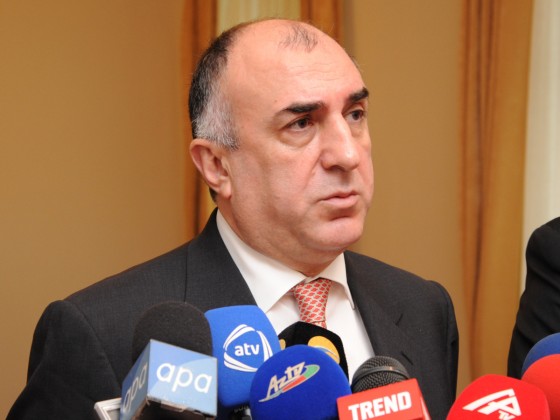
Azerbaijani Foreign Minister Elmar Mammadyarov received a delegation headed by Milica Markovic, the Rapporteur of the PACE Committee on Social Affairs, Health and Sustainable Development August 25.
The aim of the delegation’s visit is to prepare a report entitled "Intentional deprivation of the inhabitants of Azerbaijani border regions of water".
Mammadyarov stressed the importance of the water supply problem in the South Caucasus and Azerbaijan, the foreign ministry told Trend. He emphasized that as enshrined in the international documents the use of water must be free.
Stressing the humanitarian importance of water, the minister informed the delegation that the Sarsang reservoir was built to provide agriculture and the people living around it with water.
Mammadyarov stressed that as a result of Armenia’s aggression against Azerbaijan and occupation of Azerbaijani lands, people have been deprived of the opportunity to use this reservoir. The Armenian side uses the reservoir to pose a threat. It uses water in spring by creating conditions for flooding the surrounding areas. But it ceases using water in summer when there is a great need for it.
Having briefed the delegation on the process of peaceful settlement of the conflict, Mammadyarov expressed dissatisfaction with the activity of the OSCE Minsk Group.
“We can be satisfied with its activity in case if the Armenian armed forces leave Azerbaijani lands,” the minister said. He went on to add that the activity of the Minsk Group is inconclusive.
The foreign minister expressed hope that after the preparation of the report, the PACE members and the broader international community will have the opportunity to become better acquainted with the problem of water supply of the Azerbaijani population, which is one of the humanitarian consequences of the Armenian aggression against Azerbaijan.
Milica Markovic said that as is known, a person can live without bread, but not without water. She said that even though the project is of a purely humanitarian nature, the presence of political issues is not ruled out.
The Sarsang reservoir was built in 1976 on the Tartar river at the height of 726 meters above sea level and is the highest one in Azerbaijan. Since 1992, the reservoir has been controlled by the Armenian armed forces, and that’s why the districts near the frontline cannot use it. For the 20-year-old occupation, technical facilities and equipment of the Sarsang reservoir due to lack of maintenance are in an emergency condition. The probability of destruction of the reservoir as a result of malfunction, natural disaster or sabotage is extremely high and is now a real threat for Azerbaijan.
The conflict between the two South Caucasus countries began in 1988 when Armenia made territorial claims against Azerbaijan. As a result of the ensuing war, in 1992 Armenian armed forces occupied 20 percent of Azerbaijan, including the Nagorno-Karabakh region and seven surrounding districts.
The two countries signed a ceasefire agreement in 1994. The co-chairs of the OSCE Minsk Group, Russia, France and the US are currently holding peace negotiations. Armenia has not yet implemented the UN Security Council’s four resolutions on the liberation of the Nagorno-Karabakh and the surrounding regions.
Edited by CN
Trend
